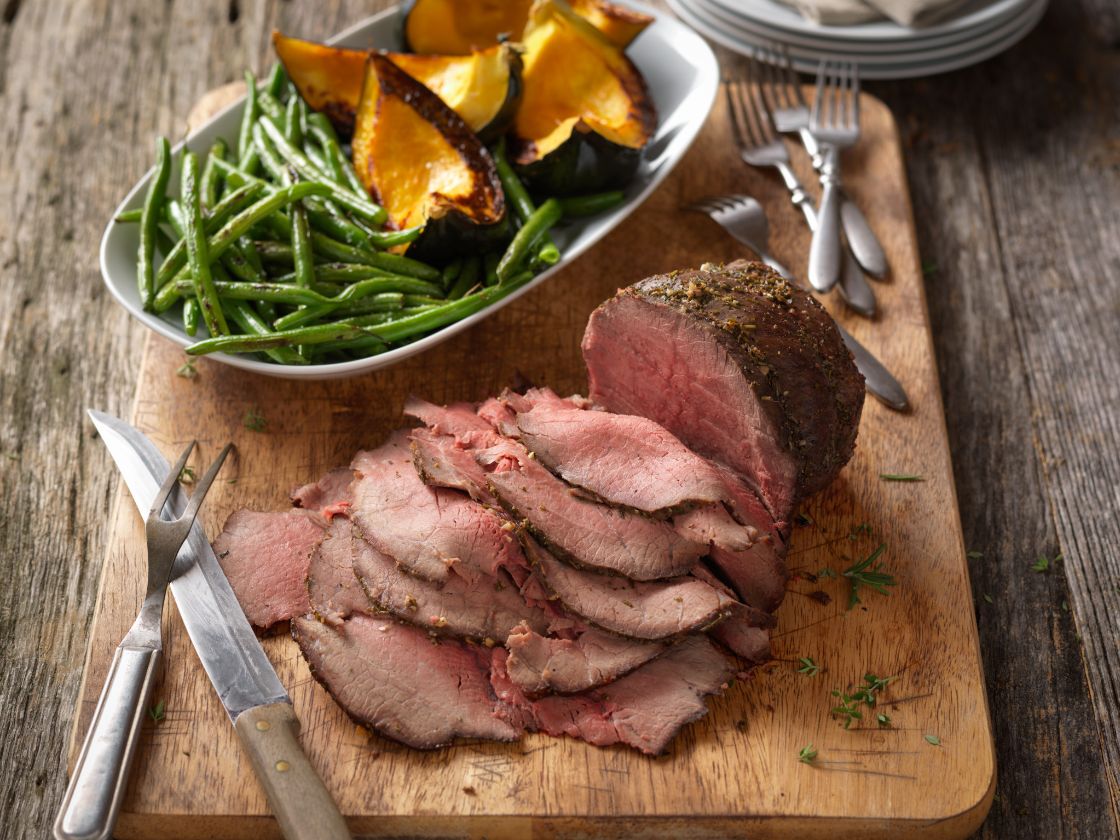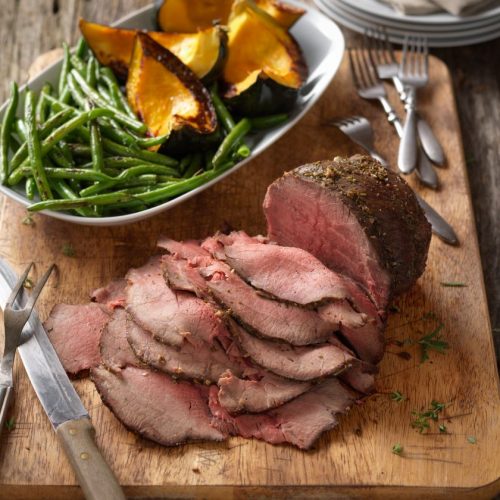Everyone needs to know how to cook a roast to perfection – EVERY TIME – with their eyes closed. Here’s a very basic recipe and I’ve included some of the steps people usually leave out and why it’s not a good idea to do so.
If you’ve ever had a roast turn out tough or bland, you’ll be able to read through this list and pinpoint what went wrong. It’s not you, it’s what you skipped. You’ll find that there are a few variables in this recipe but once you’ve done it once and know your oven and how your family prefers their roast cooked, you will do it the same time after time.
Here goes…
A list of problems that might arise, WHY and HOW TO FIX IT,
Skipping the Overnight Salting.
The meat is bland and tough. The slow salting is essential to ensure that the salt has time to work its way into the very center of the roast. In addition to seasoning this large cut of meat evenly, the salt needs time to break down proteins and help tenderize the meat.
Fear of Searing.
The exterior is spotty brown and the roast is bland. Really heat the skillet well when searing the meat. Because the roast is going into such a cool oven, little browning occurs during the roasting process. Since browning adds so much flavor, take the time to get the pan really hot and turn the roast so that it browns on all sides.
Oven Runs Too Hot or the Oven isn’t turned off.
The meat is tough. In order for the enzymes in the meat to break down the tough connective tissue in the meat, the internal temperature of the meat needs to stay below 122 degrees. After searing the beef, we roast it in a low, 225-degree oven to help this enzymatic breakdown occur. If your oven runs 25 or 50 degrees too hot, the meat will reach the final serving temperature too quickly—before the enzymes have been able to break down tough connective tissue.
The enzymatic breakdown of the connective tissue cannot continue to happen if the meat continues to roast in a 225-degree oven; the internal temperature of the beef will rise above 122 degrees before the maximum tenderizing can occur. So to continue tenderizing the beef, while slowly allowing it to come to the desired internal temperature, we turn the oven off and let the beef sit inside for another 30 minutes. Sounds crazy, but it works.
Oven Is Too Cool
The roast is underdone and the roast takes longer to get done. Low-temperature roasting requires that you exercise some patience—and not open the oven door too often as the meat cooks. A meat-probe thermometer that you can snake through the oven door is ideal. If you’re using a regular instant-read thermometer (and you better be using something), just be patient and don’t take the temperature of the roast too often—it climbs very slowly in a such a cool oven. Also, make sure your oven is properly calibrated. (Check with a cheap oven thermometer.) If your oven runs 25 degrees too cool, the roast will take much longer to cook.
How to Cook a Roast to Perfection - EVERY TIME
Equipment
- Plastic Wrap
- Paper Towel
- Wire Rack
- Rimmed pan
- Skillet - 12 inches
- Instant Read Thermometer
Ingredients
- 1 boneless Sirloin Roast (3 ½ to 4 ½ pounds) Eye or Round, Rump or Tri-Tip all work great for this recipe
- 4 ts teaspoons kosher salt or 2 teaspoons table salt This is a common mistake people make - Know your salt and use the appropriate amounts
- 2 tbs Olive oil
- 2 ts black pepper
Instructions
- Sprinkle all sides of roast evenly with 4 teaspoons kosher salt or 2 teaspoons table salt
- Wrap with plastic wrap and refrigerate 18 to 24 hours
- Adjust oven rack to middle position and heat oven to 225 degrees
- Pat roast dry with paper towels and rub roast with 2 teaspoons vegetable oil
- Sprinkle all sides evenly with 2 ts pepper
- Heat remaining oil in a 12 inch skillet over medium-high heat until the oil starts to smoke
- Sear roast until well browned in all sides, 3-4 minutes per side
- Transfer the roast to a wire rack set in a rimmed baking sheet
- Roast until instant-read thermometer inserted into center of roast registers 115 degrees for medium-rare, 1 1/4 to 1 3/4 hours, or 125 degrees for medium, 1 3/4 to 2 1/4 hours.
- Turn oven off
- Leave roast in oven until instant-read thermometer inserted into center of roast registers 130 degrees for medium-rare or 140 degrees for medium, 30 to 50 minutes longer.If roast does not reach desired temperature after 50 minutes, heat oven to 225 degrees for 5 minutes, shut it off, and continue to cook until roast is done.
- Transfer the roast to a cutting board and let it rest for 20-30 minutes. Slice meat crosswise as thinly as possible and serve.


